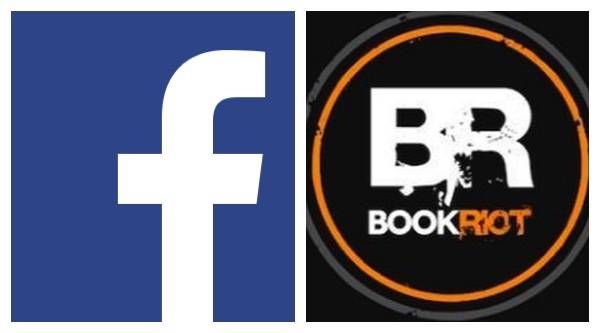
“Free” Ebooks Don’t Help Poor Kids
One of the duties I had at the last library for which I worked was helping to get patrons onto computers. For adults, this wasn’t generally a problem: they either presented a library card to me or pulled out some form of photo identification (which ranged from your standard driver’s license or passport to less traditional booking papers following a jail stay).
For teenagers and children, however, it was a different story. In order to get onto a computer to do work, they had to have either their library cards or a photo ID. A school ID would work, as would a driver’s license.
Anyone who has worked with teens or kids knows what this means. Many kids never had the opportunity to get onto the computers and internet, despite needing to do homework or research. Because they didn’t bring their IDs or simply didn’t have one — being that they’re maybe 12 or 13 and don’t HAVE identification like that — they were denied access to something they needed in order to complete assignments for school. Most of these kids, the ones who came to the desk begging me to break policy, were there because they have no internet access at home. Or, perhaps if they had internet access at home, it was via a family computer that was shared. They certainly didn’t have enough bandwidth or time on their pay-as-you-go phone plans (if they even had cell phones) to do the work they needed to do. Their phones were emergency lifelines.
The kids most harmed by these policies, which tend to be common in public libraries, are those who are the poorest and most needing of access. And kids who did bring their ID to do work still had barriers through which to plow: computer access is time-restricted in most libraries, as there are an inadequate number of stations to allow for the number of people who need to use them.
Some statistics before going further: in households where the family income is $30,000 or less in the United States, only 54% have access to broadband at home. For those who make under $20,000 a year (which is the rough poverty line for families of three), 1/3 — 33% — do not go online at all. Spend a little time with this Guardian write-up of the PEW research about internet access in the US, especially for how it impacts teens and kids. It’s eye-opening reading for those who have never spent time in a library or classroom, though those of us who have will find nothing surprising here. We know it because we’ve see it and our hands our tied.
Poor kids don’t have access to internet or devices. It’s a fact, and it’s backed up time and time again.
So why is it that, despite these numbers, the publishing industry takes on initiatives meant to reach poor kids and improve their literacy in ways that show a clear lack of understanding about the real problems these kids face? How come publishers and politicians choose to ignore those who work with children and teenagers struggling with access — to books, to reading, to technology, to a host of literacies, including digital?
Recently, Simon & Schuster announced a change in a literacy program they’ve been offering since 2003. “Cheer on Reading,” which put physical books inside cereal boxes, shifted from a print focus to digital one. Now, when kids open up a box of Cheerios, rather than getting a book to read, they’re given a code to access a digital version of a book which they can download (via proprietary software, no less). While this initiative saves the publisher on the cost of printing and distributing a physical book, it in no way allows poorer kids — those who are most in need and most likely to benefit from this kind of access — access to them.
But it’s not just this one example.
Nine publishers just signed on to another initiative meant to give access to low-income students — nearly 10,000 books will be available to kids who don’t generally have access to them, and to sweeten the pot even more, 30 cities have signed on to make sure that there are library cards in the hands of every student.
The catch to this generosity is that all of those books for low-income students are digital:
Jeffrey Zients, chairman of the National Economic Council, said that the donations by “an honor roll or major publishers” would provide “opportunity for kids to develop a love of learning. Macmillan will provide unlimited access to about 2,500 titles for children in kindergarten through 12th grade. Simon & Schuster will provide access to their entire e-catalog of books for children ages 4 to 14, about 3,000 titles.
He cited statistics that there are 13 books per child in middle-income neighborhoods but only one book for every 300 children in poor neighborhoods.
There’s a missing piece here, and it’s this: how will those low-income kids get access to this wealth of digital content? One answer is this:
[A]bout 30 towns and cities said they would introduce or press ahead with plans to put a library card in the hand of every student, a move that would help give lower income students access to digital books in libraries even if they lacked Internet access or devices at home.The New York Public Library also said that it would develop an e-reader app that would provide greater access to classics already in the public domain for students age 4 to 18 from low-income families. Non-profit groups will help that effort.
While the development of an e-reader app to allow access sounds like a good idea, in application, it’s silly. If 1/3 of those making less than $20,000 a year don’t even access the internet at all, it’s not logical to think that an app for e-readers would make a difference in getting those books into the e-hands of kids.
And what about those kids who go to the library to use the computers? Chances are greater than zero they’re there to do homework and research on those time-limited computers, not access ebooks to read on a screen. Kids and teens are not going to go to the library to read these digital books If they’re able to get to the library at all — itself a challenge for low-income families due to the cost of transportation, the need for people to be working, the way hours work at public libraries that already put limits on these stretched-to-the-max families, the pesky need to have an identification, the restrictions likely placed on the under-18 crowd when it comes to borrowing digital devices (due to liability and replacement costs) — they’re there to get work done for school.
Or, they’re there as a place to get away from their wealth of responsibilities, stresses, and the unbelievable weight of pressures on them.
Because for poor kids, the library is a lifeline. It’s how they get the work they need to get done done. It’s how they’re still on the track when their more financially stable peers are lapping them in fancy shoes and nice track pants. For poor kids, even more than their peers, the library is also their quiet place of refuge.
Digital books, even donated in vast quantities, do not help poor kids. They are yet another barrier keeping them from getting to the places they want and deserve to be.
So what’s the solution? Is there one?
Perhaps it begins by asking those who work with these kids and their families what would be most beneficial for them. Perhaps it begins by recognizing that publishing is a business, and they’re in it for their bottom lines (digital book donations are, of course, much cheaper and easier to manage than print). Perhaps also there’s a need to recognize that those who work in libraries or in schools where these initiatives are presented don’t always have the time, the money, or the knowledge themselves to put these projects into place. They’re often as cash and time strapped as the children they’re serving.
But perhaps more than anything it is recognizing that by trying to solve a problem for a demographic, sometimes our best intentions make it worse.
Get books into the hands of kids who need them. But get those books and stories into their hands in ways they have access to, and in ways that make sense to their life situations. Partner with organizations who know these demographics and who work with them on a daily basis to see what is actually helpful, rather than a nice piece of publicity.
____________________
Want more bookish goodness, news, posts about special book deals, and the occasional puppy reading pic? Follow us on Facebook:


















